LATEST NEWS


A day laborer falls off an unsafe scaffold and dies. A custodian gets work-related asthma from cleaning products. A painter is tested and found to have lead poisoning. Every year, thousands of California workers are injured on the job or become ill as a result of health hazards at work.
Twelve workers tragically lose their lives on the job each day in the United States, with 409 workplace deaths in California in 2009. Latino workers are particularly at risk. In Los Angeles County, where nearly one quarter of the state’s fatalities occur, Latino workers have a 50 percent higher fatality rate than non-Latino workers.
Work-related injuries and illnesses result in substantial human and economic costs, and can be prevented. Having the data necessary to understand the problem is the first step.
A health indicator is a numerical value or statistic that helps us measure the state of health in a community or group.
» Read more about: Tracking Occupational Health in California »
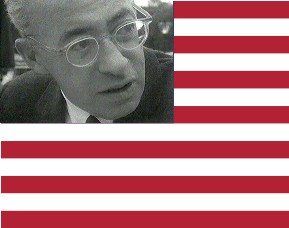

In the 1960s and ’70s, Saul Alinsky, often considered the founder of community organizing, was a popular figure among liberal activists, based primarily on his how-to manuals, Reveille for Radicals and Rules for Radicals, and his reputation as a tough-talking, street-smart agitator who helped poor and working-class Americans gain a voice in battles with politicians and corporations. Now the Republican Party and its right-wing echo chamber are trying to make Alinsky, who died at 63 in 1972, famous all over again, by linking him to Barack Obama and demonizing the president as a dangerous radical.
During his primary campaign, Newt Gingrich constantly invoked Alinsky’s ghost. “The centerpiece of this campaign, I believe, is American exceptionalism versus the radicalism of Saul Alinsky,” he said in stump speeches and television appearances. Or variously: “If you believe as we do in the Declaration of Independence and you think that’s a better source than Saul Alinsky,
» Read more about: Why Saul Alinsky Is Still Scaring Conservatives »


You don’t have to be a recent homeowner to know how precarious the housing market has been since the bubble popped in 2007. Consider this, for example: Today half of all San Bernardino County homeowners have to put on scuba gear to view their mortgages. Last week, however, just as that county toyed with the idea of seizing such homes through eminent domain, there was a bright spot. Governor Jerry Brown signed into law (to take effect January 1, 2013) the Homeowner Bill of Rights, a consolidation of several bills that had been strongly pushed by state Attorney General Kamala Harris.
The HBR offers several solid benefits to homeowners, but two stick out:
» Read more about: State Gives Struggling Homeowners a "Fighting Shot" »


Sandra Zebi is no stranger to the challenges posed by urban waste. Now the owner of a vintage clothing store in Marina del Rey, Zebi was born in Sao Paulo, Brazil, which produced 14,000 tons of waste each day.
Ironically inspired by her urban surroundings, Zebi created art using recycled materials. Moving to L.A., she renovated a run-down building and now uses it to house her shop, which is filled with recycled clothing and art.
Zebi loves L.A. but she is not a fan of our waste and recycling system. Like many small business owners she has found that her store does not have a recycling option.
Because of her tenacious environmental consciousness, Zebi seeks other options. Some of her actions are illegal or frowned upon by city government. A business partner, Vanessa, for example, gives bags of recyclable materials to neighborhood homeless men who reside near their store.
» Read more about: Out of Stock: Recycling Options for LA Businesses »


The London Olympics starting in two weeks will be an enormous logistical and security challenge for the city. More than four million people are expected to visit London over the Olympic period and billions more will be watching; 4.7 billion people from around the globe watched at least some of the Beijing Olympics in 2008.
Under that kind of global spotlight, successful games will burnish the city’s glow and bring millions of new tourists for years to come. Failure, on the other hand, could tarnish the city’s reputation in the eyes of the world.
London is off to a bad start. The private global security giant, G4S, hired to guard the games failed to meet their hiring targets. The British government has stepped in and called up 3,500 troops to fill in. It’s yet another example of public contracting gone bad.
At first look,
» Read more about: Plan B From Outer Space: Olympics’ Privatization Fiasco »
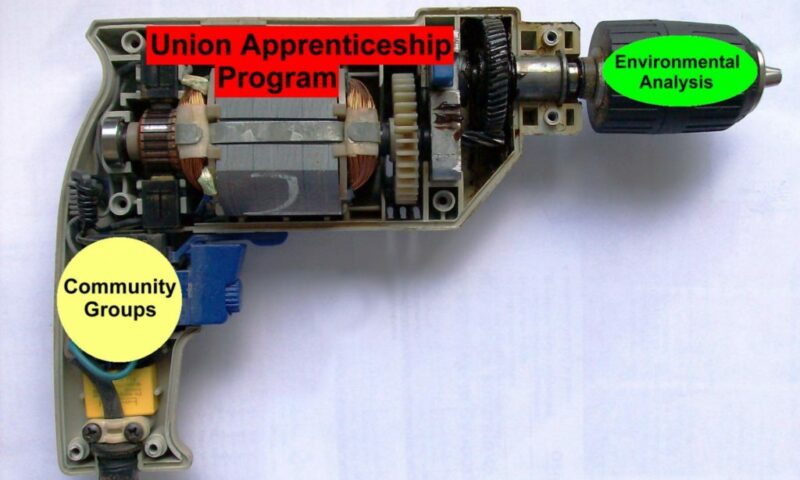

One central challenge to building a green economy is that for many, the inner workings of a key pillar of that economy — the construction industry — are a mystery. Understanding construction helps us move beyond simply creating green “jobs,” which could be temporary or even dangerous, to building a new green economic sector that generates permanent construction careers.
Construction is one of the largest sectors of the U.S. economy, with a dollar value approaching $800 billion and more than 7.2 million workers. It brings together people from all different walks of life. For community members that the economic downturn has hit the hardest — low-income workers, minorities, women, those returning from the military or from prison — construction offers a chance at a middle-class career.
A growing piece of the construction industry is retrofitting buildings to increase energy efficiency. Launching a project to retrofit a building,
» Read more about: What It Really Takes to Create a Green Economy »
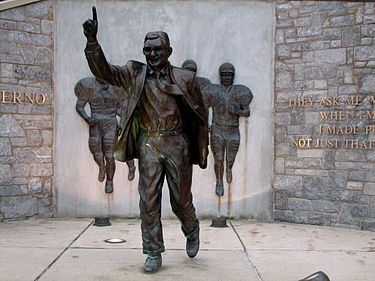
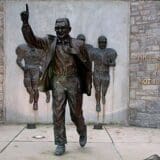
Last week Penn State University released a report by former FBI Director Louis Freeh about the Jerry Sandusky scandal. It confirms what most of us already believed—that the leadership at Penn State had reason to believe Sandusky was molesting children but failed to do anything.
Sandusky’s been convicted, and several key officials—Penn’s president Graham Spanier, athletic director Tim Curley and football coach Joe Paterno —have been fired or have been convicted in the press and will likely soon be convicted in a court. (Paterno died last January.)
Now the debate is turning to the responsibility of the National Collegiate Athletic Association (NCAA), the idea being that the NCAA should impose sanctions on Penn State.
The main idea of this debate is that Penn State’s cover-up says something about the influence of football on a college campus, and on our culture at large. It doesn’t. This isn’t to say the Paterno legend is irrelevant,
» Read more about: The Penn State Scandal: It’s Not About Football »


At any point in their lives, workers may need to take time off to care for either a new child or a sick family member. While we have state and federal laws to protect workers from losing their jobs or benefits when they take leave, the leave time is mostly unpaid. Unpaid leave hurts a family’s income and economic security – many of our working families, especially in this economy, live at the margin and can’t afford to take leave without pay.
No worker should have to make the difficult choice between a paycheck and being there for a loved one.
Ten years ago, labor unions and community organizations in California came together to ensure that our working families did not have to make this difficult choice. We successfully advocated for and passed the California Paid Family Leave (PFL) Act in 2002.
The PFL law established the first-of-its-kind family leave insurance program in the nation.


Economist Robert Reich lays it all out for us as he debunks six conservative economic myths.This clip was taken from a talk at the Summit For a Fair Economy in Minneapolis.


I just received my my latest 401k quarterly statement and the following was printed on the front. Is this what they mean by “job killing government regulations?” (If so, bring them on!)
“Beginning August 30, the Department of Labor requires fees to be consistently disclosed to all eligible employees, participants and beneficiaries of retirement plans subject to the Employee Retirement Income Security Act. As a result, statements have been enhanced to display more details about retirement plan fees. Now it may be easier for you to compare fees to overall value. There are no new fees as a result of the new regulations – just new ways of showing fees that already exist.”
Background: The Department of Labor’s Employee Benefits Security Administration (EBSA) released the final rule in February 2012 to give workers uniform, comparable and understandable information about costs and fees of their plan so they can better manage their retirement investments.
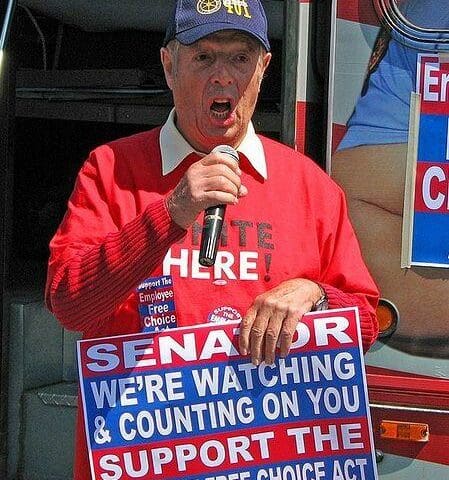
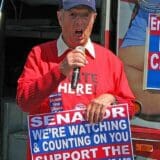
(The following feature originally appeared on Labor Notes and is reposted hereby permission.)
When the next opportunity for labor law reform arrives, union membership will be smaller and our political clout even more diminished. If we are to succeed, future reform proposals must be wrapped in a broader mantle that will appeal to all workers.
The four-year drive for the Employee Free Choice Act was the single largest union-backed campaign in decades and it succeeded in uniting the labor movement as never before. I doubt there was a steward in the country who wasn’t familiar with EFCA and why we needed it.
The proposed law, which so many members fought for between 2006 and 2010, would have made it faster and easier for workers to gain union recognition through card check, created stiffer penalties for employers who violate labor laws,


If you’ve been following media coverage of the battle over Walmart’s proposed store in Chinatown, you probably have the impression that the fight is between the retail giant and labor. Chinatown leaders have been largely absent from press reports of the controversy, and to the extent they are mentioned one would think they want Walmart in their neighborhood.
Thursday’s hearing at the L.A. City Planning Commission should set the record straight — Chinatown doesn’t want Walmart, and residents and business owners are loud and clear about it for anyone who is paying attention.
The hearing was on the proposed Interim Control Ordinance (ICO) for Chinatown, which would temporarily stop chain stores over 20,000 square feet from opening in that community. By a vote of 14 to 0 the Council directed the Planning Department to draft the ordinance back in March, but staff dragged its feet for more than three months.
» Read more about: Walmart’s Bureaucratic Victory Can’t Mask Growing Opposition »
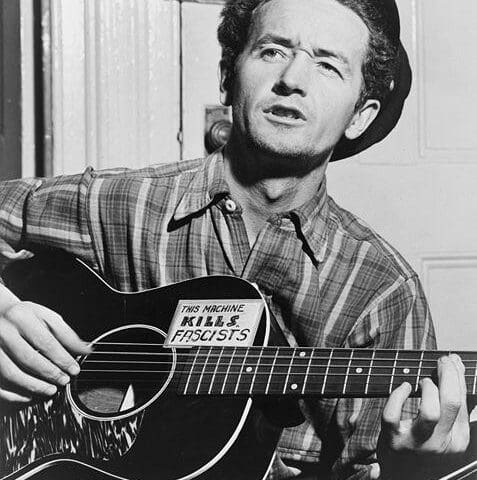

The words of some songs seem to ring true forever. Especially Woody Guthrie’s “Do-Re-Mi,” with its scathing appreciation of life in the Golden State:
California is a garden of Eden, a paradise to live in or see;
But believe it or not, you won’t find it so hot
If you ain’t got the do-re-mi.
This Saturday, July 14 (Bastille Day!), A Better World’s A-Coming honors the Dust Bowl Bard’s 100th birthday with “An Echo Park Tribute to Woody Guthrie”  – what its organizers, the Trailer Trash Project (TTP), are calling “a free backyard picnic celebrating the life and music of Echo Park resident Woody Guthrie.” But wait, there’s more! “Enjoy an afternoon concert of hip-hop, blues, jazz, psychedelic and bluegrass by Woody-inspired musicians. Art activities [including children’s music and storytelling] will take place throughout the day.
– what its organizers, the Trailer Trash Project (TTP), are calling “a free backyard picnic celebrating the life and music of Echo Park resident Woody Guthrie.” But wait, there’s more! “Enjoy an afternoon concert of hip-hop, blues, jazz, psychedelic and bluegrass by Woody-inspired musicians. Art activities [including children’s music and storytelling] will take place throughout the day.
» Read more about: Woody Guthrie at 100: This Party Is Your Party »

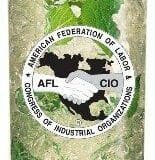
You don’t have to go to Havana to enjoy a good mojito (although such a visit would give you the chance to savor the old Bacardi headquarters, a jaw-dropping example of tropical art deco). Here’s a recipe from our friends at LA Labor 411, who keep you up to date on what goods and services bear the union label.
Looking to sip into something a little more comfortable? Why not try a union-made mojito. Here’s how to build the ideal cool cocktail for those hot August nights that are right around the corner. Make one for yourself and then raise a glass to all the union workers who did such an amazing job repairing the 405 Freeway.
Ingredients:
1.5 oz. of Bacardi Superior Rum
half cup club soda
12 mint leaves
half a lime
1 tbsp.
» Read more about: Brother, Can You Spare a Lime? (Union Mojitos!) »


Mark Lacter, in a recent conversation on KPCC’s Business Update, was surprisingly cynical about the importance of publicly funded transit projects to our region’s economic recovery.
Commenting on the recently passed federal transportation bill that will expedite construction of 12 L.A. County mass transit projects, Lacter challenged Mayor Villaraigosa and other elected officials who tout the “game-changing” job creation benefits of public works investment. He argued that it is hard to determine the number of jobs generated by these types of projects.
It’s true that there is no way to predict the precise number of direct and indirect jobs created through infrastructure investment. But we cannot underestimate the ability of these projects to increase employment in the construction industry, one of the hardest-hit sectors during the Great Recession.
The 12 transit projects that will now be fast-tracked are part of a larger package of transportation improvements that will create at least $2.8 billion in economic activity and $65 million in additional tax revenue for L.A.
» Read more about: Earth to Mark Lacter – Investing in Infrastructure Is a Game Changer »


Imagine you just finished your standard 65-hour work week. You’re exhausted, you want to go home and spend time with your family – you never really get to see them but for your one day off – but you know instead you’re going to fall asleep within minutes of getting home. Your legs and back ache from today’s 12-hour shift, but at least it’s payday. You wince when you see your check: It’s going to be another month of some tough decisions about which bill to forgo, but at least the rent will get paid and you’ll be able to pick up some groceries.
Except that as he hands you your check, your boss tells you that he’s adding another five hours to your weekly schedule. You’re not going to get paid any more money, but you will have to work more hours.
This is essentially the situation that truck drivers at the Ports of Los Angeles and Long Beach are about to find themselves in as changes roil the industry.
» Read more about: Carriers Stick Port Truck Drivers With Chassis Fees »


The young lifeguard, Tomas Lopez, who was fired recently for saving a life, is now being honored by the South Florida city of Hallandale Beach as a hero. He’s been interviewed on CNN, Fox and Friends and is a YouTube celebrity. This week, he was given the key to the city.
Lopez was the employee of Jeff Ellis Management, LLC, the private company the city contracts with to provide lifeguard services on a stretch of public beach. He ran to rescue a swimmer and was fired because he left the beach zone the company was paid to protect. Six of Lopez’s co-workers said they would have done the same and were fired also. It has been a public relations disaster for the company and has put the small city of Hallandale Beach into the national spotlight.
But, in some respects, the firing was a logical, if unwise,
» Read more about: City Budgets, Outsourcing and a Fired Lifeguard »


Here’s a Google map you may not want to be consulting any time soon – at least without a drink in hand. It’s the one used by Working America‘s Job Tracker feature that shows the locations of American jobs reported to be leaving your community. By punching in a ZIP Code, you’ll be able to see which companies are exporting jobs or laying off employees, as well as those which have been cited for health and safety violations.
Entering one L.A. ZIP brought up the scary-looking map above, along with links spelling out who’s involved and where this labor triage is taking place within a 50-mile radius of the ZIP Code.


Leader of the Pack: Tom Longboat (72) and Dorando Pietri (19) leaving Windsor Castle
When Olympic marathon races first appeared in the 1896 Athens games, the route was a somewhat arbitrarily chosen 25 miles and, contrary to popular myth, had no authentic origin in Greek history. By the time of the 1908 London Olympiad, the length had been even more whimsically extended to 26 miles, 385 yards – the exact distance between its starting point at Windsor Castle and the course’s terminus at a massive, barely completed stadium in Shepherd’s Bush. Among other things, trainers in those days believed it was bad for their runners to drink water while running and instead kept them supplied with shots of brandy, whisky and – in a pinch – strychnine, which was used as a stimulant.
These are just some of the many revelations to be found in David Davis’ Showdown at Shepherd’s Bush: The 1908 Olympic Marathon and the Three Runners Who Launched a Sporting Craze,
» Read more about: Marathon Men: Class, Race and Races at the 1908 Olympics »
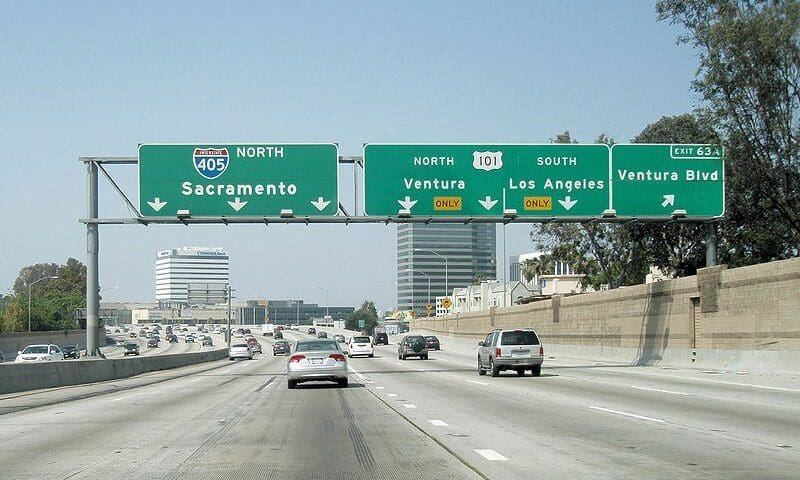

Los Angeles was granted its anticipated funding for America Fast Forward, a project aiming to expedite construction of more extensive and functional public transportation systems. The project’s approval is a victory for both the people of Los Angeles and Mayor Villaraigosa, who has been supporting it for years.
America Fast Forward is a provision of a larger transportation bill approved by Congress in late June and signed into law by President Obama last week. The $100 billion package, which received rare bipartisan support, will reduce harmful emissions, fund the construction of mass transit projects in multiple cities and create thousands of jobs throughout the country.
That’s the good news. On the downside, the law — which hardly resembles earlier versions of the legislation — cuts funding for a number of important programs and puts off critical decisions by only providing monies through 2014.
L.A.’s program would initially be funded by the Transportation Infrastructure Finance and Innovation Act (TIFIA),
» Read more about: A Good News-Bad News Transportation Law »